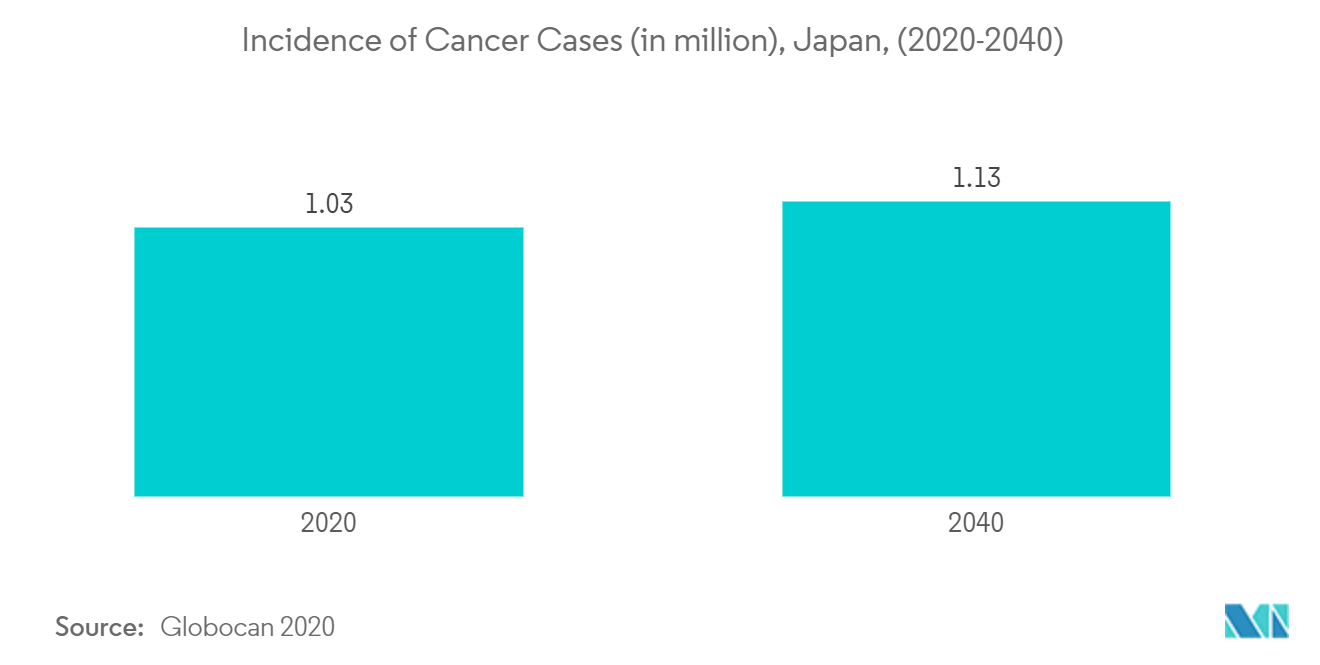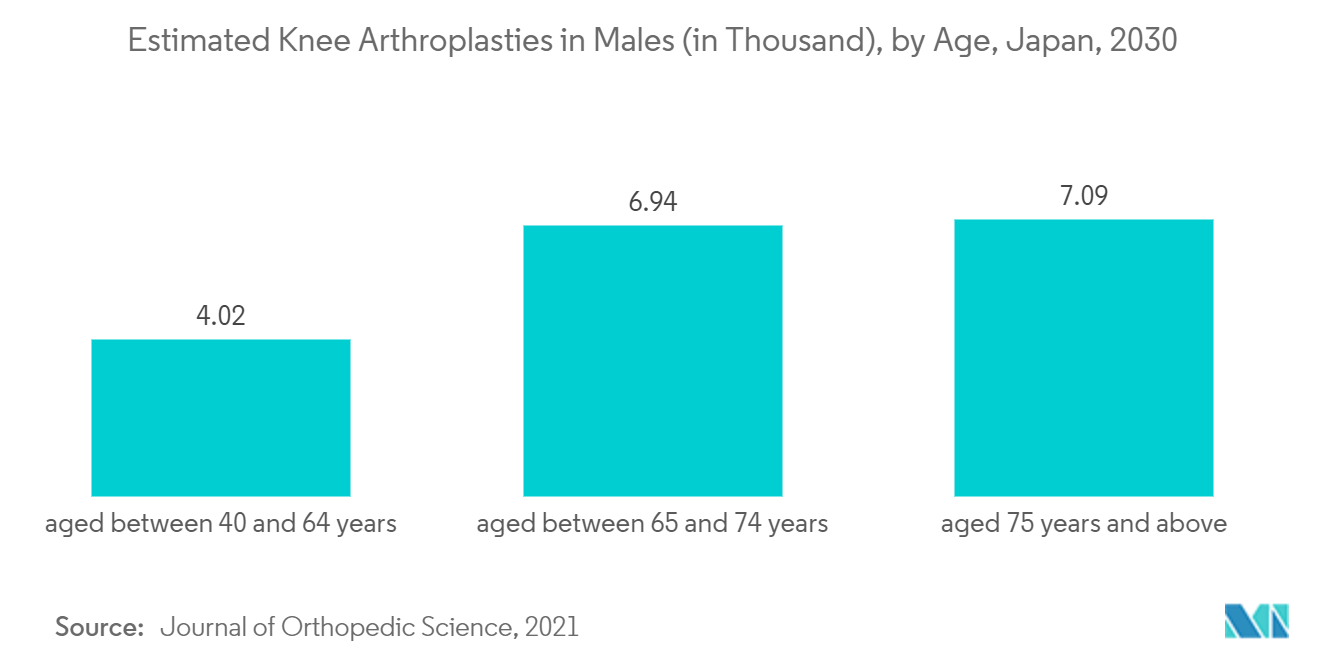Market Trends of Japan Diagnostic Imaging Equipment Industry
Oncology Segment is Expected to Witness Significant Growth Over the Forecast Period
Oncology is defined as diagnosing and treating tumors and cancers. Oncology is one of the leading causes of morbidity and mortality. Therefore, the need for imaging in the diagnosis of cancer is high within the region, as it is used to detect tumors and other abnormalities as well as determine the extent of the disease, and evaluate the effectiveness of treatment. The incidence of cancer cases within the region is elevating the growth of the oncology segment.
According to the 2022 statistics published by Ganjoho, about 378,600 new cancer cases (218,900 cases in males and 159,700 cases in females) were reported in Japan in 2021. In addition, as per the same source, lung cancer was the leading site (24%) for males, followed by rectum/colon cancer (13%), stomach cancer (12%), pancreas (8%), and liver cancer (7%). Thus, the high burden of cancer among the population raises the need for early diagnosis which in turn is anticipated to fuel the demand for imaging tests such as CT scans, MRIs, and others, hence propelling the segment's growth.
Moreover, product launches and technological advancements by major players are also fueling the market growth. For instance, in December 2021, the company Canon Medical announced integration with Spectronic Medical's MRI Planner software to strengthen its presence in the field of radiotherapy planning.

Nuclear Imaging Equipment Segment is Expected to Have the Significant Market Share Over the Forecast Period
Nuclear imaging is used in the diagnosis of diseases by using small amounts of radioactive substances in patients and is used in a wide range of medical applications including cardiology, obstetrics/gynecology, vascular, urology, and other medical applications.
The nuclear imaging segment is expected to hold a significant share of the market over the forecast period owing to the factors such as the increasing burden of chronic diseases such as orthopedic disorders, neurological disorders, and others as well as the growing technological advancements. For instance, according to an article published in the Journal of Orthopaedic Science, in September 2021, about 7092 knee arthroplasties are expected to be performed on women between the ages of 40 and 64 years, 22,957 on women between the ages of 65 and 74 years, and 58,340 on women over 75 years in Japan by 2030. Thus, it indicates that the number of hip and knee surgeries among the population is expected to increase which in turn fuels the demand for nuclear imaging equipment in the country.
Furthermore, the growing technologically advanced products by the companies raise their adoption in treating people suffering from chronic diseases, hence contributing to the segment growth. For instance, in March 2021, Kyoto Japan, Shimadzu Corporation launched a new BresTome TOF-PET functional imaging system intended for the head and breast, in Japan. The imaging system offers a double resolution of common whole-body PET systems.
Therefore, owing to the aforementioned factors, the studied segment is anticipated to grow over the forecast period.


